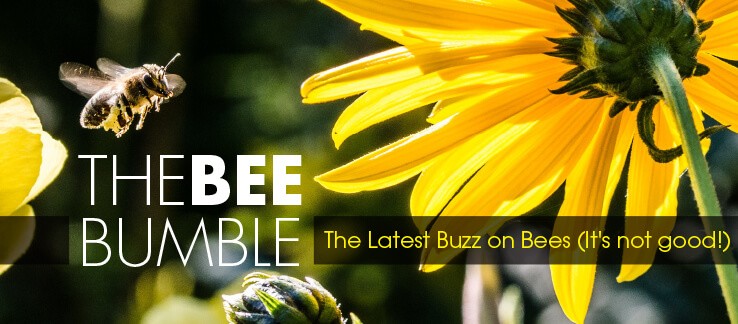
There's something so beautiful about a bee – a true work of art. The way they colonize, the way they work together, the way the look, and the way they keep our world in bloom – and fed. But the future is not bright for our bees, and that means that there's even risk for ourselves and our own food supply.
The honey bees pollinate more than 150 food crops in the United States, and they affect $47 billion in agriculture crops! Specifically, the blueberries and cherries are 90% dependent on the honey bee population. Without honey bees, produce aisles would decrease by 30%!Unfortunately, beekeepers have seen a dramatic decline in bees over the years as bee hives have dropped from 4 million in the 1970s to around 2.5 million today.
Even worse, this decline has amplified with a 44% decrease between Aril 2015 and April 2016. With these staggering numbers, it’s no wonder bees have been moved to the U.S. Endangered Species List for the first time.
While causes of the decline can be attributed to pesticides and malnutrition, the most frightening one might be what’s known as Colony Collapse Disorder, or CCD. CCD “refers to the unexplained disappearance and dying of [honey] bee colonies.” Knowledge about CCD is limited, and is worrying beekeepers, farmers and more and more the general public as news spreads.
Thankfully, companies and foundations alike have taken notice of the situation, and have begun teaming up in various ways to help bees fight back! For instance, General Mills and the USDA will contribute a combined sum of $4 million to help further the initiatives of the Xerces Society. The Xerces Society is an international non-profit organization dedicated to the conservation of invertebrates and their habitats.
With donations and continued support, The Xerces Society plans to plant and protect pollinator habitats across the country through 2021. These groups will be working with hundreds of farmers to plant more than 100,000 acres of pollinator habitat. With projects like these, The Xerces Society hopes to make “meaningful, long-term conservation a reality.”
It's estimated that nearly 1 out of every 3 bites a person takes is from a bee pollinated nut or flower.We as consumers are deeply indebted to bees. Without them, not only would we miss sweet-smelling flowers and delicious produce, but the life cycle as we know it would begin to crumble.
And, did you know that bees pollinate about one-sixth of flowering plants and around 400 of varying agricultural products? Without the pollination from bees, at least one-third of the products we rely on would virtually disappear just like that. Poof.
According to General Mills, bees account for over $25 billion in agriculture products each year alone; not to mention their important role in creating some of our favorite products: honey, strawberries, avocados, cotton, almonds and even tomatoes!
Speaking of tomatoes, major companies such as NatureSweet® rely on bees for help with their pollination. Out of the hundreds of varying types of bees, it’s the bumblebees that go hand-in-hand with their tomato production.
How does this all work? Bumblebees work their magic through a process called “buzz pollination,” in which they place their bodies close to the pollen producing part of the plant. They vibrate their muscles at a high frequency which allows them to literally shake the pollen off the plant! The bumblebee then cross-pollinate the tomato flowers, and this is what creates them and all of the produce that we love!
No other animal or people group has perfected the art and efficiency of pollination like the bees. They need our help, and it’s critical we take charge now in protecting and growing their population, before it’s too late. If you'd like to get involved, there are numbers of organizations that can help, and here is a great place to start.


Comments